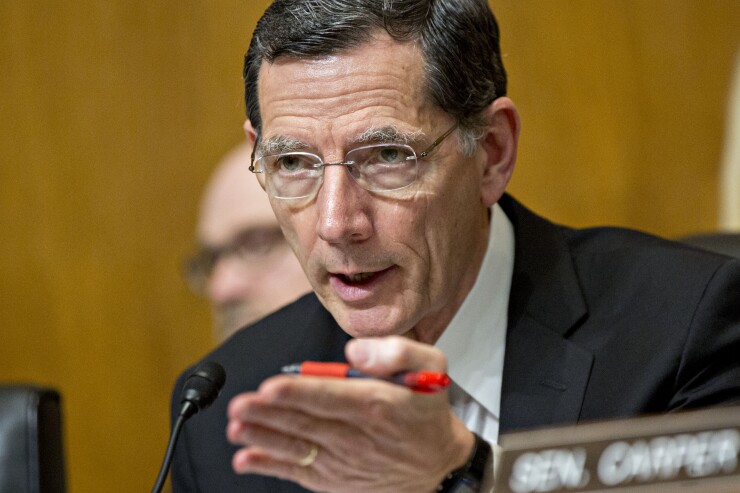WASHINGTON – The administration’s draft legislative plan for streamlining the permitting and environmental process for infrastructure projects, which President Trump is expected to tout during his State of the Union speech Tuesday night, is laying the groundwork for a war between industry and environmental groups.
A 23-page discussion draft of the “Infrastructure Legislative Outline,” which was circulated to groups and lawmakers in December and may have been revised some since then, was published by the Washington Post on Friday.
Industry groups and key Republican lawmakers say the reforms are needed because permitting and environmental laws have too often delayed the completion of critical projects by years. But environmental groups claim the administration is using infrastructure as an excuse to gut major environmental laws rather than deal with the real issue for projects, which is obtaining funding.
Sen. John Barrasso, R-Wyo., chairman of the Senate Committee on Environment and Public Works, responded to last week’s leak of the administration’s six-page infrastructure plan by saying, “Any infrastructure plan should include streamlining so that projects get started and finish faster.”

Nick Goldstein, vice president of regulatory and legislative affairs for the American Road & Transportation Builders Association, said on Monday, “ARTBA has consistently maintained that we do need to streamline the environmental review and approval process and that there is a lot of unnecessary delay and duplication of efforts. There are a lot of things that can be done to shorten the process with sacrificing necessary safeguards.”
Goldstein said the draft Infrastructure Legislative Outline “is pretty comprehensive. They take a look at the entire process.
They not only recommend reforms for the [National Environmental Policy Act] but they also talk about Clean Water Act permitting, sections of the Clean Air Act, the Endangered Species Act, and even judicial review.”
The document goes beyond roads and bridges and covers pipelines and wireless facilities, he noted. It proposes to expand to other agencies the permitting and environmental reforms that have been put in place at the Department of Transportation, he added.
But the Center for American Progress Action Fund, which represents progressives, said the president’s infrastructure plan “nothing more than a scam” to gut or significantly diminish “at least 10 bedrock environmental laws to make it easier for corporations to bypass critical protections for air, water, and wildlife.”
Scott Slesinger, legislative director for the Natural Resources Defense Council, said, ”This isn’t death by a thousand cuts, it’s more like a firing squad that kills the prisoner – NEPA – 20 times.”
He said the document’s provisions “are outrageous” such as one that “essentially allows every federal agency that’s supposed to follow NEPA to exempt themselves from doing an environmental impact statement” and prevents the exemption from being reviewed by a court.
Slesinger said the reforms proposed for the Clean Water Act, the Clean Air Act, and the Endangered Species Act “have implications that go well beyond infrastructure.”
“There’s a solution to infrastructure,” he said, “It’s money.”
Slesinger said 39 of 40 projects under way by the U.S. Army’s Corps of Engineers have been delayed because of money. The Corps, he said, has $90 billion of projects with completed environmental impact statements ready to go, but they have been delayed because the agency has an annual project budget of $5 billion.
The administration’s draft would create a new “One agency, One decision” structure for environmental reviews that would establish deadlines and require a Permitting Council to either grant agencies an extension to deadlines or reassign the decisions for a permit to the lead federal agency.
The draft would eliminate multiple reviews by multiple agencies and re-examine certain judicial review standards “to ensure issues are quickly resolved.” The draft would also delegate more responsibilities to states.
The draft would direct the Council on Environmental Quality, a division of the executive office of the President, to issue regulations to streamline the NEPA process. It would allow design-build contractors to conduct final design activities before the NEPA process is complete. Advance acquisition and preservation of rail rights-of-way also would be allowed before the NEPA process is complete.
The draft would remove the Environmental Protection Agency’s authority to veto a Section 404 (Clean Water Act) permit for the discharge of dredged or fill material.
Federal agencies would be authorized to accept funding from non-federal entities to support environmental and permitting reviews.





